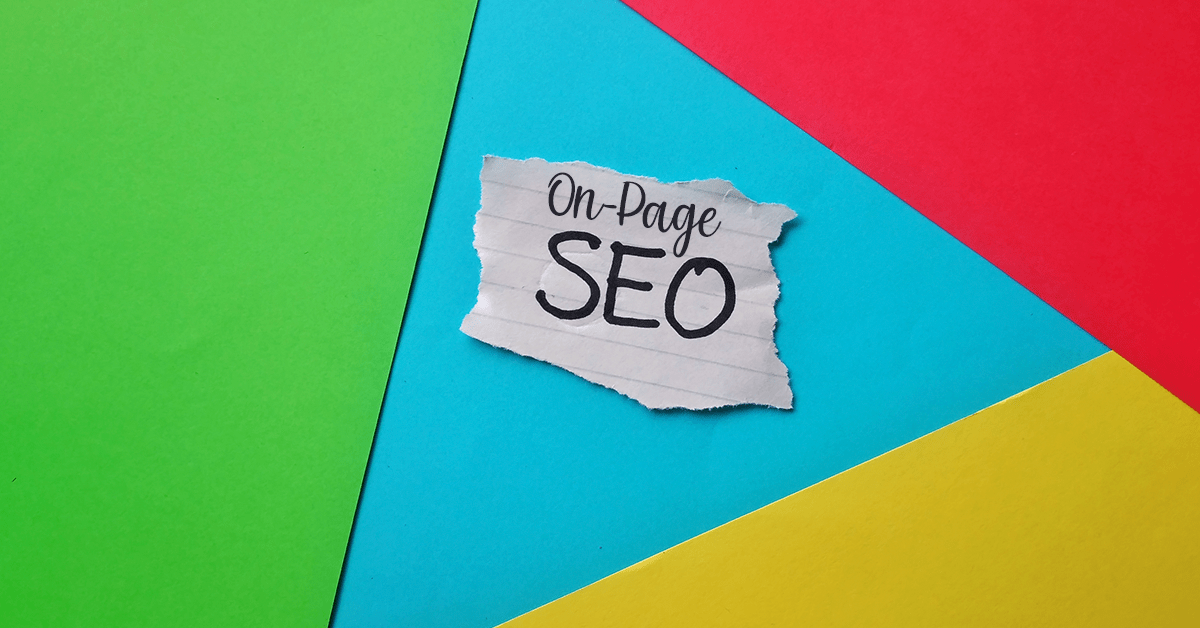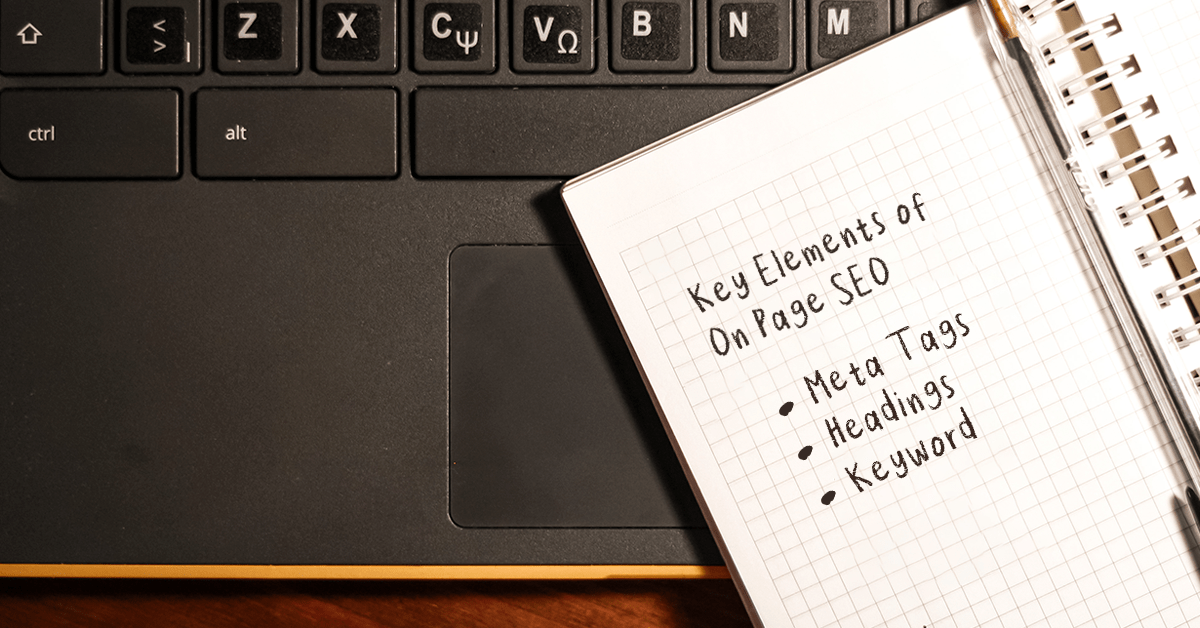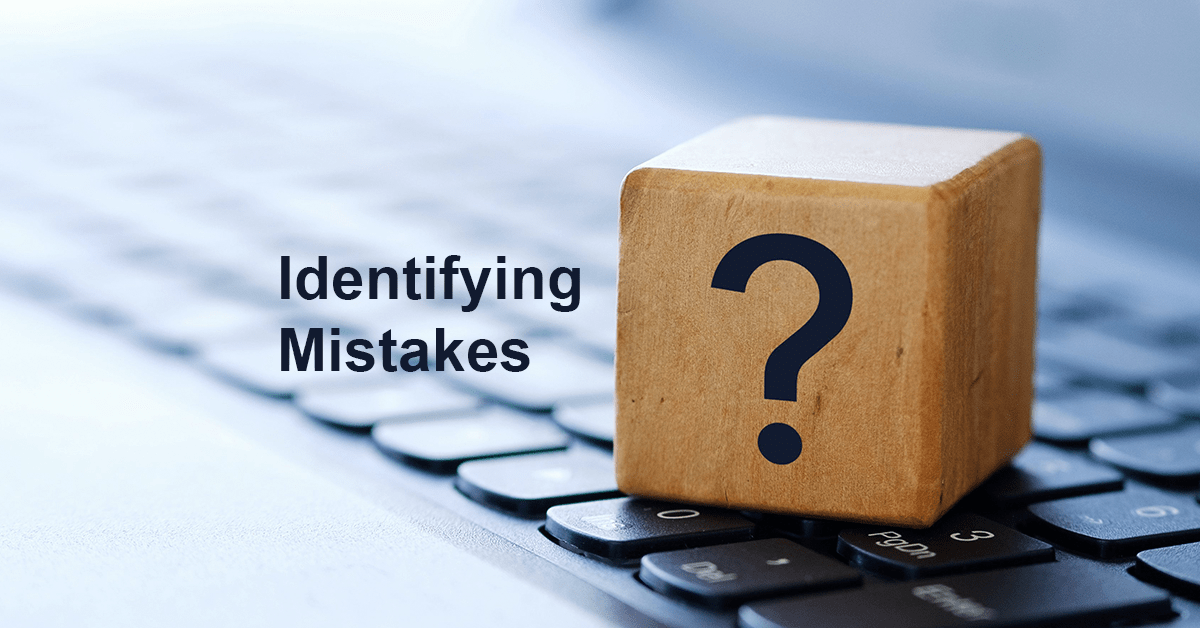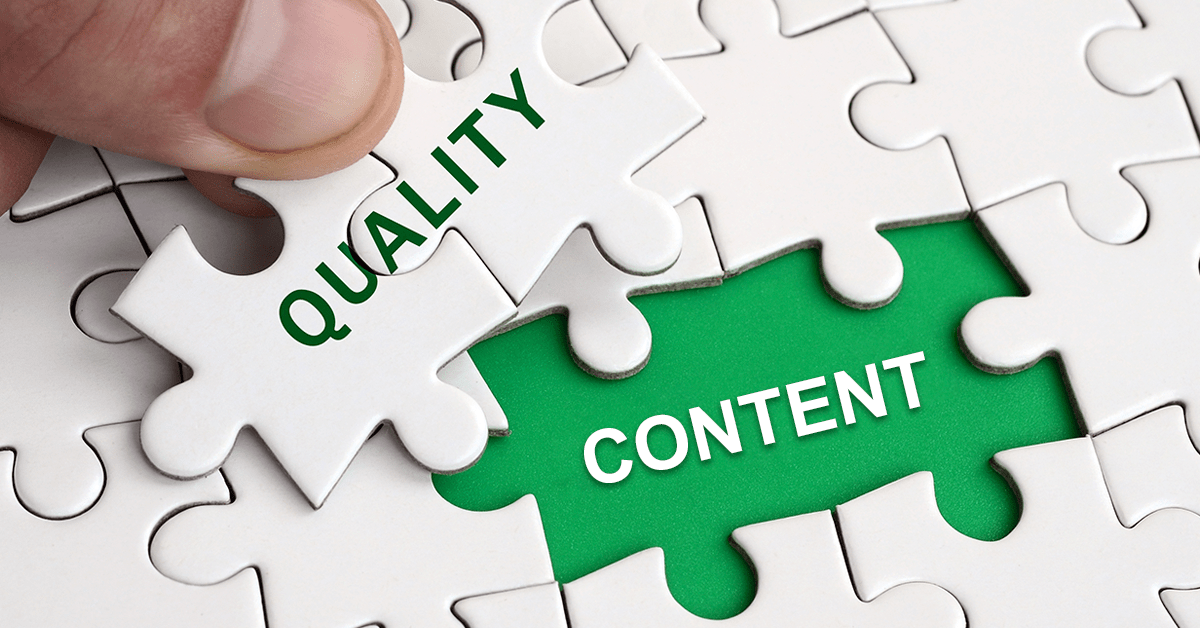
On-Page SEO Essentials
In today’s digital landscape, understanding the crucial aspects of on-page SEO is vital for improving website visibility and driving organic traffic. By implementing effective strategies to avoid common on-page SEO mistakes, businesses can enhance their SERP rankings and overall online presence.
Optimising internal links, alt text, page speed, and keyword density are key components of better on-page SEO performance. These elements play a significant role in ensuring that a website is well-structured, user-friendly, and easily discoverable by search engines.
"It's essential to prioritise on-page SEO strategies to achieve higher visibility and attract relevant organic traffic," says an industry expert.

SEO Fundamentals
Importance of On-Page SEO
In the realm of digital marketing, on-page SEO plays a pivotal role in determining a website’s visibility and its rankings on search engine results pages (SERPs). When executed effectively, on-page SEO directly influences how easily a website can be discovered by online users. By optimising various on-site elements, businesses can significantly enhance their online presence and attract organic traffic.
Furthermore, on-page SEO contributes to improving the overall user experience by ensuring that the content is relevant and easily accessible. It enables websites to align with the specific search queries of users, thereby increasing the likelihood of attracting visitors who are genuinely interested in the content offered.
Key Elements of On-Page SEO
Several key components constitute effective on-page SEO strategies. These include meta tags, headings, and strategic keyword placement within the content. Meta tags provide valuable information about a webpage’s content to search engines and users, while headings help structure the content for better readability and understanding.
Moreover, high-quality content is crucial for successful on-page SEO. The relevance and value of the content greatly influence its search engine rankings and user engagement. Internal linking also contributes to on-page SEO by establishing a clear hierarchy and connecting relevant pages within a website. Additionally, ensuring mobile responsiveness is essential as it directly impacts user experience and search engine rankings.
By focusing on these fundamental elements of on-page SEO, businesses can establish a strong foundation for enhancing their website’s visibility and attracting organic traffic.

Identifying Mistakes
Common On-Page SEO Errors
When it comes to on-page SEO, there are several prevalent mistakes that can significantly hinder a website’s performance and SERP rankings. These errors, if not addressed, can have a detrimental impact on the overall user experience and the visibility of the website on search engine results pages. Some of the most common on-page SEO mistakes include:
Keyword Stuffing
Overloading web pages with excessive keywords in an attempt to manipulate search engine rankings.
Irrelevant Content
Publishing content that is not aligned with the interests or needs of the target audience.
Poor Meta Descriptions
Neglecting to create compelling and accurate meta descriptions that summarise the content of web pages.
Broken Internal Links
Failing to maintain functional internal links within the website’s content structure.
Slow Page Load Speed
Allowing web pages to load slowly, leading to a poor user experience and potential ranking penalties.
It is imperative for businesses to be mindful of these common errors and take proactive measures to rectify them in order to maintain a strong online presence and positive user engagement.
Consequences of On-Page SEO Mistakes
The repercussions of on-page SEO errors can be far-reaching, impacting various aspects of a website’s performance and its ability to attract organic traffic. When these mistakes persist, they can lead to decreased organic traffic, lower conversion rates, and diminished visibility on search engines.
Furthermore, neglecting to address on-page SEO mistakes can result in a loss of credibility with both users and search engines. Websites that consistently exhibit optimization blunders may struggle to establish authority within their respective industries and fail to effectively compete for relevant search queries.
“Identifying these mistakes early on is crucial for maintaining a strong online presence,” emphasises an industry expert. “Resolving these issues promptly is essential for ensuring that your website remains competitive in today’s digital landscape.”
By recognizing the potential consequences of on-page SEO mistakes and prioritising error identification and resolution, businesses can proactively safeguard their online visibility and user engagement.

Link Optimization
Maximising Internal Link Structure
Internal linking is a fundamental aspect of on-page SEO and plays a crucial role in enhancing website authority and user navigation. By strategically connecting different pages within a website, businesses can improve the overall user experience and provide valuable pathways for visitors to explore related content.
To maximise the internal link structure, it is essential to consider the following tips:
Relevance and Context: Ensure that internal links are contextually relevant to the content they are embedded within. This helps users navigate seamlessly while also indicating to search engines the relationships between different pages on the website.
Anchor Text Optimization: Use descriptive and relevant anchor text when creating internal links. Avoid generic phrases like “click here” and instead incorporate keywords or phrases that accurately represent the linked content.
Hierarchy and Organization: Establish a clear hierarchy of information within the website’s structure. Prioritise linking from high-authority pages to those with lower visibility to distribute link equity effectively.
User-Focused Navigation: Design internal link structures with the user’s journey in mind. Make it easy for visitors to find additional resources, related articles, or product/service pages that align with their interests.
By implementing these strategies, businesses can optimise their internal link structures to not only enhance on-page SEO but also provide an intuitive navigation experience for website visitors.
Avoiding Common Linking Mistakes
While internal linking is beneficial for on-page SEO, there are common pitfalls that should be avoided to maintain optimal performance:
Overlinking
Excessive use of internal links within content can lead to a cluttered reading experience for users and may appear manipulative to search engines. Focus on quality over quantity when incorporating internal links.
Broken Links
Failing to regularly check and update internal links can result in broken pathways within the website, leading to poor user experience and potential indexing issues by search engines.
Non-Relevant Linking
Embedding internal links into content where they do not add value or relevance can dilute the effectiveness of the overall link structure. Ensure that each internal link serves a specific purpose in guiding users towards related, useful information.
By steering clear of these common mistakes and adhering to best practices, businesses can establish a cohesive and effective internal linking structure that contributes positively to their on-page SEO efforts.

Image Alt Text
Optimising Alt Attributes for Images
In the realm of on-page SEO, optimising alt attributes for images holds significant importance. Descriptive alt text not only enhances the accessibility of web content but also contributes to improving search engine indexing and ranking. When creating alt attributes for images, it’s essential to follow specific guidelines to ensure that they are meaningful and SEO-friendly.
Descriptive and Concise
Alt text should provide a brief yet accurate description of the image, conveying its purpose and relevance to the surrounding content. It should be concise while capturing the essence of the visual element.
Keyword Consideration
Incorporating relevant keywords into alt attributes can further enhance their SEO value. However, it’s crucial to maintain a natural integration of keywords without compromising the descriptive nature of the alt text.
Contextual Relevance
Ensure that the alt text aligns with the context of the webpage and complements the overall content. This helps search engines understand the relationship between images and surrounding textual information.
Accessibility Focus
Prioritise creating alt attributes with accessibility in mind, aiming to provide visually impaired users with meaningful descriptions of visual elements on a webpage.
By adhering to these guidelines, businesses can optimise their image alt attributes effectively, contributing to improved on-page SEO performance and enhanced user experience.
Common Mistakes in Image Alt Text
Errors in image alt text can have adverse effects on both website accessibility and search engine indexing, impacting overall on-page SEO performance. Identifying and rectifying these mistakes is crucial for maintaining a strong online presence:
Vague or Missing Alt Text
Failing to provide alt text or using generic phrases as alt attributes can diminish the accessibility and contextual relevance of images on a webpage.
Keyword Stuffing in Alt Text
Overloading alt attributes with keywords in an unnatural manner can lead to negative repercussions from search engines and may detract from user experience.
Irrelevant Descriptions
Providing inaccurate or irrelevant descriptions for images can mislead both users and search engines regarding the actual content depicted in visuals.
Long-Winded Descriptions
Alt text should be concise yet descriptive. Lengthy descriptions may overwhelm users relying on screen readers and could potentially dilute its SEO impact.
To avoid these pitfalls, it’s essential to craft image alt text thoughtfully, ensuring that it serves its dual purpose of enhancing accessibility and contributing positively to on-page SEO efforts.

Speed Enhancement
In the ever-evolving digital landscape, the speed at which a website loads plays a crucial role in shaping user experience and influencing its search engine rankings. A slow-loading website can lead to increased bounce rates, dissatisfied visitors, and ultimately, a negative impact on the site’s overall performance.
Improving Page Load Speed
Improving page load speed is essential for creating a seamless and engaging user experience while also positively impacting search engine rankings. Here are some actionable strategies for optimising website speed and performance:
Optimise Images
Compressing images and utilising the appropriate file formats can significantly reduce load times without compromising visual quality. By optimising images, websites can deliver content more efficiently to users. Regular website maintenance is key to ensuring your site remains fast and accessible – don’t let outdated or oversized images slow you down.
Minimise HTTP Requests
Reducing the number of elements on a webpage, such as scripts, stylesheets, and images, can minimise HTTP requests and accelerate page load times. Streamlining these elements leads to faster rendering of web pages.
Utilise Browser Caching
Implementing browser caching allows frequently accessed resources to be stored locally on a user’s device. This reduces the need for repeated downloads upon subsequent visits, resulting in faster load times for returning visitors.
Content Delivery Network (CDN) Integration
Leveraging a CDN distributes website content across multiple servers geographically closer to users. This reduces latency and enhances load speeds by delivering content from the nearest server location.
By implementing these strategies, businesses can significantly enhance their website’s load performance and provide visitors with an optimal browsing experience.
Technical Considerations for Speed Enhancement
When considering technical aspects related to speed enhancement, several key factors come into play:
Caching Mechanisms
Implementing efficient caching mechanisms at both the server and client levels can substantially improve page load times. Utilising browser caching directives along with server-side caching technologies enhances overall site speed optimization.
Image Optimization Techniques
Employing image optimization techniques such as lazy loading and responsive image delivery ensures that visuals are rendered efficiently without slowing down page load times.
Server Response Time Optimization
Optimising server response time involves reducing backend processing durations by employing efficient coding practices and leveraging high-performance hosting solutions.
The correlation between page load speed and on-page SEO effectiveness cannot be overstated. Search engines prioritise websites that offer swift loading times as part of their ranking algorithms, recognizing the significance of providing users with an optimal browsing experience.

Content Quality
Enhancing Content Relevance and Value
Audience-Centric Approach
Prioritise understanding the needs and interests of the target audience when creating content. By addressing their pain points and providing valuable insights, businesses can establish themselves as authoritative sources within their respective industries.
Keyword Integration
Seamlessly integrate relevant keywords into the content to ensure alignment with specific search queries. However, it’s crucial to maintain a natural flow of language and avoid overemphasis on keyword usage.
Engaging Multimedia Elements
Incorporate multimedia elements such as videos, infographics, and interactive visuals to enhance the overall value of the content. Engaging media not only enriches user experience but also contributes positively to on-page SEO.
Comprehensive Information
Provide comprehensive and in-depth information on topics relevant to the target audience. Thorough coverage of subjects establishes credibility and encourages longer visitor engagement, signalling value to search engines.
By focusing on these strategies, businesses can elevate their website’s content relevance and value, thereby improving its on-page SEO performance and user engagement.
Avoiding Content Quality Pitfalls
While enhancing content relevance is essential, it’s equally crucial to steer clear of common pitfalls that can impact on-page SEO performance. Some key practices for maintaining high content standards and relevance include:
Avoiding Thin Content
Refrain from publishing shallow or superficial content that lacks depth or substantial information. Instead, strive to create comprehensive resources that add value for visitors.
Consistent Quality Control
Implement rigorous quality control measures to ensure that all published content meets established standards for accuracy, relevance, and usefulness.
Regular Updates
Continuously update existing content to reflect current industry trends and developments. Freshness signals are important for search engines when determining the relevancy of web pages.
Diverse Content Formats
Embrace diverse formats such as long-form articles, guides, case studies, and interviews to cater to various preferences within the target audience while adding depth to your website’s offerings.
By avoiding these common pitfalls and adhering to best practices for maintaining high-quality content standards, businesses can fortify their on-page SEO efforts while delivering valuable experiences for both users and search engines.

Keyword Strategy
When it comes to on-page SEO, the strategic placement of keywords holds significant importance in influencing search engine rankings and overall website visibility. Businesses must carefully consider their keyword strategy to ensure optimal performance in organic search results.
Effective Keyword Placement
Strategic keyword placement is essential for maximising the impact of on-page SEO efforts. By integrating relevant keywords seamlessly into the content, businesses can signal to search engines the relevance of their web pages to specific search queries. Here are some guidelines for effective keyword placement and density:
Natural Integration
Incorporate keywords organically within the content, ensuring that they flow naturally within sentences and paragraphs. This natural integration signals relevance without appearing forced or manipulative.
Title Tags and Headings
Utilise primary keywords in title tags and headings to emphasise the main focus of the content. This not only aids search engines in understanding the page’s topic but also enhances user readability.
Beginning and End of Content
Place key terms strategically at the beginning and end of content pieces to signal their importance within the context of the material.
Image Alt Text
Integrate relevant keywords into image alt text, providing additional context for search engines while enhancing accessibility for visually impaired users.
By following these best practices, businesses can optimise their on-page SEO through effective keyword placement tactics, thereby improving their visibility in search engine results.
Avoiding Keyword Stuffing
While strategic keyword usage is crucial, it’s equally important to avoid keyword stuffing, which refers to overloading content with excessive keywords in an unnatural manner. The negative impact of keyword stuffing extends beyond just SEO; it also affects user experience. Here are some recommendations for maintaining natural and effective keyword usage:
"Overusing keywords can detract from the quality of content and diminish its value both for users and search engines," advises an industry expert.
Focus on Relevance
Prioritise relevance and user intent when incorporating keywords into content. Ensure that they align with the context of the material and genuinely contribute to its comprehensiveness.
Diverse Vocabulary
Instead of repetitively using exact match keywords, incorporate synonyms and related terms to enrich the vocabulary within the content. This broadens coverage on search engines while avoiding redundancy.
Content Flow
Maintain a natural flow of language within content, emphasising meaningful communication over excessive repetition of specific terms. This ensures that users engage with valuable information rather than encountering repetitive or forced language.
By steering clear of keyword stuffing practices and embracing natural, effective keyword usage, businesses can enhance their on-page SEO performance while delivering high-quality content experiences for their audience.
Mastering On-Page SEO
In mastering on-page SEO, businesses can elevate their website’s visibility and overall performance by implementing effective strategies and best practices. By optimising internal links, alt text, page speed, and content quality, they can enhance their on-page SEO performance and attract organic traffic.
Strategic keyword placement is a cornerstone of mastering on-page SEO. By carefully integrating relevant keywords into the content in a natural and seamless manner, businesses can signal the relevance of their web pages to search engines without appearing forced or manipulative. This approach ensures that the content remains valuable for both users and search engines.
Furthermore, focusing on website optimization through on-page search engine optimization (SEO) techniques is crucial for achieving sustainable online visibility. Businesses should prioritise user-centric approaches to content creation while embracing diverse content formats to cater to various audience preferences.
By hiring a website design company, businesses can take their on-page SEO to the next level. A professional design company doesn’t just focus on the technical aspects of SEO; they also bring a wealth of expertise in overall website design. This includes aspects of communication, branding, and user experience, which are all critical components of a successful online presence. A well-designed website not only ranks better in search engines but also provides a more engaging and effective experience for users, thereby enhancing the brand’s reputation and reach.
By mastering these essential elements of on-page SEO and partnering with a skilled website design company, businesses can position themselves for improved search engine rankings, enhanced organic traffic, and sustained online success.




